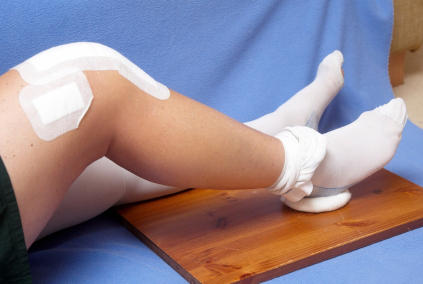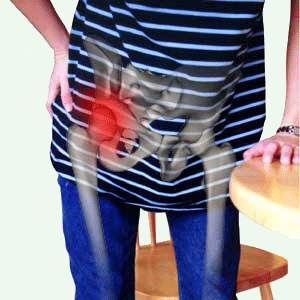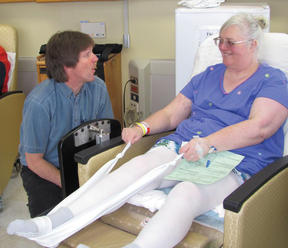Total Joint Replacements: What You Should Know (Part 3)
Here we are – the final part of our three part series on total joint replacements. We’ve already talked about how to prepare before you even get the surgery done, and then what to expect while in the hospital. Let’s talk about what to expect as a whole during the rehabilitation process.

What to Expect During Your Recovery from Total Joint Replacements
This is where the road to recovery will vary more depending upon whether you’ve had a total hip replacement or a total knee replacement. It will also vary person to person, even with the same type of surgery being completed.
Exercises: Typically, you will start with some exercises that appear to be pretty basic. When you actually start performing them, however, they will seem more challenging than you realize. These exercises are important to help build a good strong foundation before you continue through the rehab process.
Precautions: In some cases, particularly in the case of total hip replacements, you may have certain restrictions of movements you can do until you’ve reached a certain point in healing. These restrictions or precautions are temporary, and it is important that they are followed to make sure that your body can heal as quickly and easily as possible. Your physical therapist will develop an exercise program that both meets your recovery needs and respects any restrictions that are in place. The PT will also guide you through the process of returning to normal movement and activities once your precautions are lifted.
Pain Management: As you may expect after ANY surgery, it is normal to experience some pain and discomfort after a total joint replacements. Everyone has their own tolerance level and perception of their pain. Your physician will help you with pain management from the perspective of pain medication. Your physical therapists will also help with pain management. Recommendations from your physical therapist may include the following:
- Ice – Regardless of your total joint replacements, ice helps to decrease swelling and inflammation, which will help to decrease your pain. In all cases, make sure to have at least one layer of fabric between your skin and your method of icing – this will protect your skin.
- Ice pack (my personal favorite is this one): A moldable ice pack is easiest, because it can better reach any areas that need attention. Make sure to ice for about 20 minutes at a time, unless otherwise directed by your therapist.
- Bag of peas: This is a popular cheap alternative to a moldable ice pack; however, this method doesn’t get as cold. If you choose to use a bag of peas, make sure that you mark the bag “do not eat” – because of the repeated freezing and thawing, there is an increased risk of growing bacteria that you don’t want to eat!
- Ice compression unit: These units are seen predominantly in the hospital, but can be rented or purchased for home use. I find that patients who have had a total knee replacement really like these. They ice and provide compression at the same time, which promotes further decreases in swelling. You can also safely use these for longer than 20 minutes, but follow the recommendations of your therapist.
- Movement – As one my professors and colleagues loves to say, “Motion is lotion” (thank you, Sharon!). And this statement is so true! Movement helps to keep our joint lubricated and muscles loose. People are typically most stiff and sore first thing in the morning, because you’ve been resting in bed all night and things have gotten tight. The same feeling will occur if you spend a lot of time during your day sitting or lying down. If you are able to incorporate small rounds of movement throughout your day, it can decrease your overall pain levels.
- Positioning – It can seem difficult to get comfortable after surgery. Your PT can help you figure out some other options for sitting and lying down, and can give you guidance for making other tasks or activities easier or less uncomfortable.

As you can see, there are many things to consider as you prepare for your surgery, a variety of options of how to start your recovery process after the surgery is done, and a long list of ways that a physical therapist will help you along the way. I hope this has been a helpful guide for all of you that are either considering surgery or already have it scheduled. If you’ve already had the surgery, share with us any other ideas that you’ve tried!
Contact us at Back in Step Physical Therapy:
- If you have questions in preparation for an upcoming surgery,
- If you want to get scheduled for “pre-hab”,
- If you are needing physical therapy following a surgery,
- or if you have other aches and pains, feel limited in your activities, or want to avoid future injury or surgery.

Article author, Alyssa Arms, PT, DPT, OCS holds a Doctor of Physical Therapy (DPT) degree from the University of Colorado Anschutz Medical Campus, and later obtained a Board Certification as an Orthopedic Clinical Specialist (OCS). She is also the President and Owner of Back in Step Physical Therapy in Centennial, Colorado, and is an instructor at her PT alma mater.



